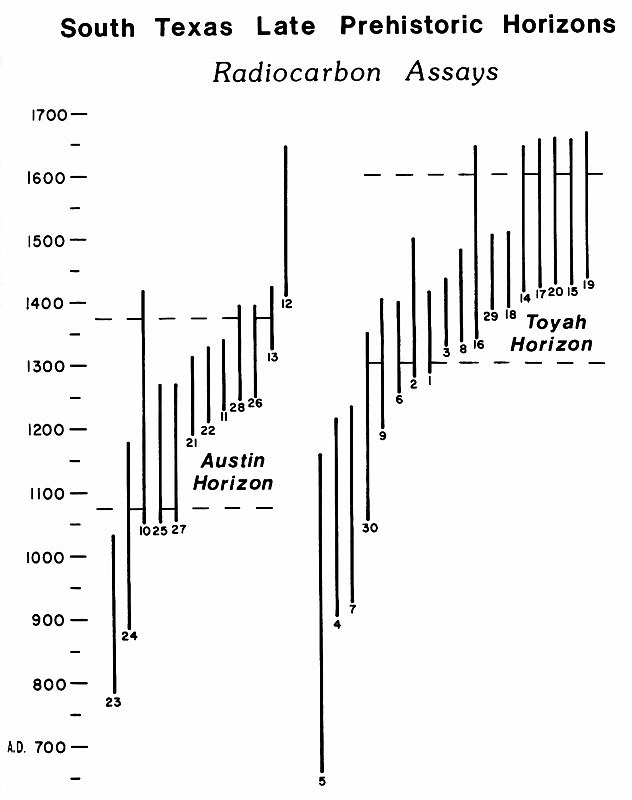Radiocarbon dates from sites in South Texas showing
the two major inferred periods or "horizons" of the Late Prehistoric era. The graphic suggests that
intervals are better thought of as successive cultural patterns that probably coexisted for about a
century. The dates on the left are associated with the earlier pattern labeled as the Austin Horizon
(ca. 1100-1400 A.D.), during which the bow and arrow and pottery first appear in the region. The
dates on the right are associated with the later pattern which Black termed the Toyah Horizon (ca.
1300-1600 A.D.) as exemplified by the Hinojosa site. Notice that within each group are clear outliers
that represent dating problems rather than reality. Several other caveats are needed.
The dates shown in this graphic are those known as of 1986. Each radiocarbon "date" (assay) is depicted as a bar showing the full 2-sigma error range (95% confidence range) based on a 1982 calibration published in the journal Radiocarbon. Radiocarbon calibrations have improved since then, but the basic pattern shown holds up. Since the 1980s, archeologists have obtained more precise assays by using the AMS dating method, which requires only a tiny sample compared to the handful of charcoal needed with conventional radiocarbon dating methods. See Radiocarbon Dating Understood for more information about the complex topic of radiocarbon dating.
|
